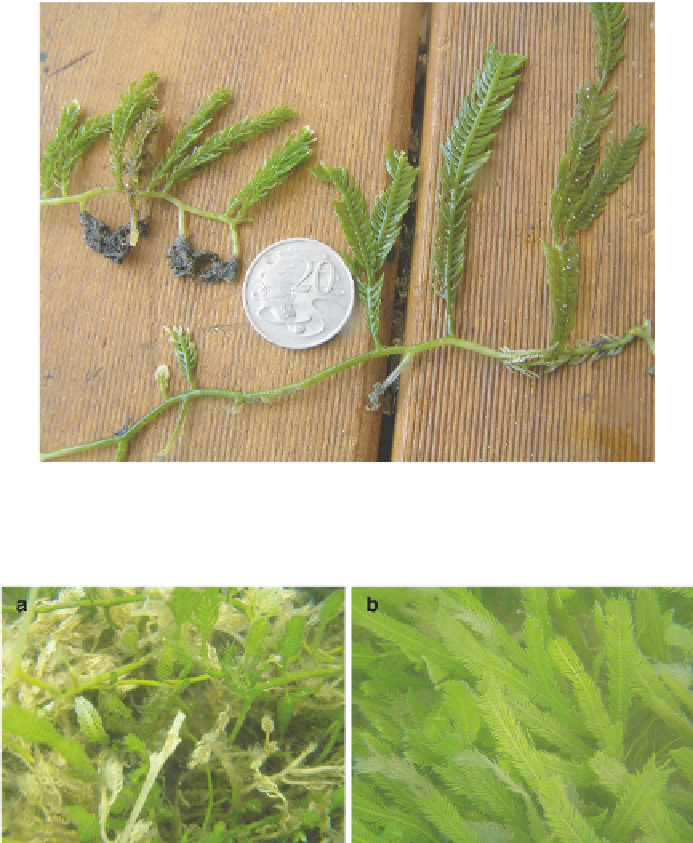Biology Reference
In-Depth Information
that runs across the sandy or muddy bottom and is anchored to the substrate by
bundles of colorless, filamentous, root-like rhizoids (Figs. 15.1 and 15.2). Growth is
indeterminate (Collado-Vides and Robledo 1999), and
C. taxifolia
is native in subti-
dal waters in tropical and subtropical areas, including the Caribbean, Indonesia,
Southeast Asia, Australia, and Hawaii (Phillips and Price 2002; Guiry and Dhonncha
2004).
Caulerpa taxifolia
can be found as isolated individuals on reef flats, sandy
areas, or the undersides of floating docks (e.g., Coconut Island, Hawaii) or in a
Fig. 15.1
Two morphologies of invasive
Caulerpa taxifolia
from New South Wales, Australia.
The more spiral morphology (individual on left) occurs in areas with higher levels of water
motion
Fig. 15.2
Caulerpa taxifolia
meadows. (
a
) A meadow of invasive
C. taxifolia
in early spring in
Lake Conjola, NSW, Australia in which you can see new growth emerging from where the colo-
nies had died back in the winter. (
b
) A lush meadow of native
C. taxifolia
from Moreton Bay,
QLD, Australia

